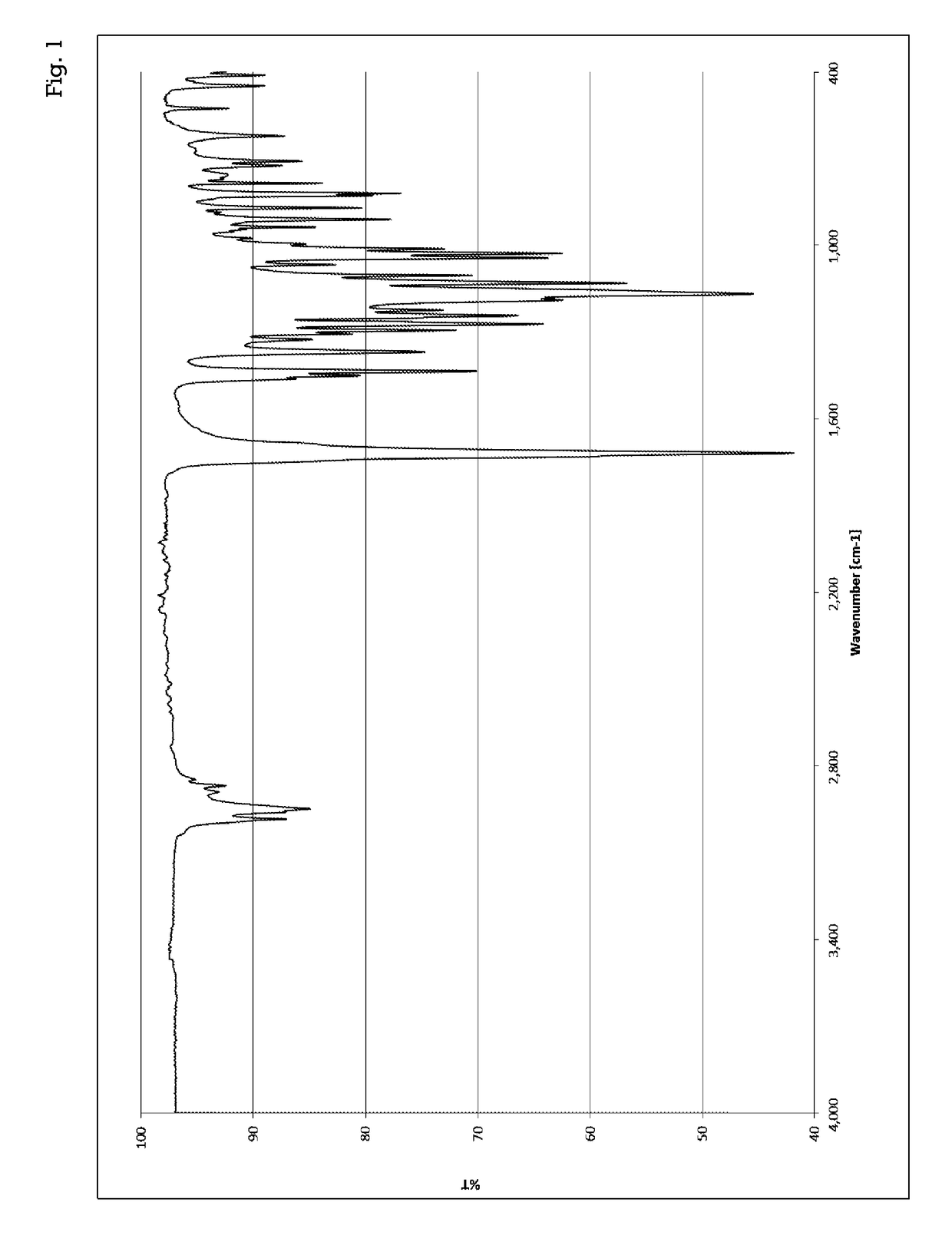Tetracarboxylic dianhydride, carbonyl compound, polyamic acid, polyimide, methods for producing the same, solution using polyamic acid, and film using polyimide
a technology of tetracarboxylic dianhydride and carbonyl compound, which is applied in the field of tetracarboxylic dianhydride, can solve the problems of inability to use in optical and other applications where transparency cannot be achieved, and achieve the effect of achieving efficient and surely production of tetracarboxylic dianhydride, and reducing the cost of production
- Summary
- Abstract
- Description
- Claims
- Application Information
AI Technical Summary
Benefits of technology
Problems solved by technology
Method used
Image
Examples
example 1
[0289]A 1000 mL autoclave vessel (manufactured by Taiatsu Techno Corporation under the trade name of “Hyper Gras Star TEM-V-type”) made of glass was added with methanol (410 mL), CuCl2(II) (40.8 g, 304 mmol), 5,5′-bibicyclo[2.2.1]hept-2-ene (also referred to as: 5,5′-bi-2-norbornene. 13.8 g, 74.1 mmol: in the following description, sometimes simply referred to as “raw material compound.”) represented by the following general formula (16):
and Pd3(OAc)5(NO2) (83.2 mg, 0.37 mmol in terms of Pd), to thereby obtain a mixture liquid. Note that Pd3(OAc)5 (NO2) was produced by employing a method described in page 1991 of Dalton Trans (vol. 11), published in 2005.
[0290]Subsequently, a glass tube was provided so that bubbling of gas could be performed through the glass tube to the mixture liquid present inside the vessel. Next, the vessel was tightly closed and the inside atmospheric gas was substituted with nitrogen. After that, a vacuum pump was connected to the vessel to reduce the pressur...
example 2
[0295]First, a solution was prepared by dissolving 72 g of acetic acid with 5 g of the tetraester compound obtained in Example 1 and represented by the general formula (17) (5,5′-bi-2-norbornene-5,5′,6,6′-tetracarboxylic acid tetramethyl ester). The solution was added into a flask of capacity 200 mL with a refluxing tube. Next, 0.089 g of trifluoromethanesulfonic acid (CF3SO3H) as an acid catalyst (homogeneous acid catalyst) was added into the solution. Note that the amount of the acid catalyst used (the amount added into the solution) was such an amount that the mole ratio of the functional group (sulfonic acid) in the acid catalyst ([amount of moles the tetraester compound]:[amount of moles the functional group (sulfonic acid) in the catalyst)]) was 1:0.05 relative to the tetraester compound represented by the general formula (17) (such an amount that the amount of moles of the acid of the catalyst was 0.05 mole equivalents relative to the tetraester compound).
[0296]Next, after th...
example 3
[0300]
[0301]Under a nitrogen atmosphere, 0.601 g (3.00 mmol) of 4,4′-diaminodiphenyl ether (4,4′-DDE) was introduced as an aromatic diamine into a 20 mL screw cap vial, and also 0.9910 g (3.00 mmol) of the tetracarboxylic dianhydride obtained in Example 2 (tetracarboxylic dianhydride represented by the general formula (18)) was introduced into the screw cap vial. Subsequently, 6.01 g of dimethylacetamide (N,N-dimethylacetamide) was added into the screw cap vial to obtain a mixture liquid. Next, the obtained mixture liquid was stirred under a nitrogen atmosphere at room temperature (25° C.) for 3 hours to produce a polyamic acid, thereby obtaining a reaction liquid containing the polyamic acid (solution of polyamic acid). Note that a dimethylacetamide solution containing the polyamic acid at a concentration of 0.5 g / dL was prepared by using the thus obtained reaction liquid [a solution of the polyamic acid (solvent: dimethylacetamide)], and the intrinsic viscosity [η] of the polyamic...
PUM
| Property | Measurement | Unit |
|---|---|---|
| Carrier mobility | aaaaa | aaaaa |
| Temperature | aaaaa | aaaaa |
| Temperature | aaaaa | aaaaa |
Abstract
Description
Claims
Application Information
 Login to View More
Login to View More - R&D
- Intellectual Property
- Life Sciences
- Materials
- Tech Scout
- Unparalleled Data Quality
- Higher Quality Content
- 60% Fewer Hallucinations
Browse by: Latest US Patents, China's latest patents, Technical Efficacy Thesaurus, Application Domain, Technology Topic, Popular Technical Reports.
© 2025 PatSnap. All rights reserved.Legal|Privacy policy|Modern Slavery Act Transparency Statement|Sitemap|About US| Contact US: help@patsnap.com



